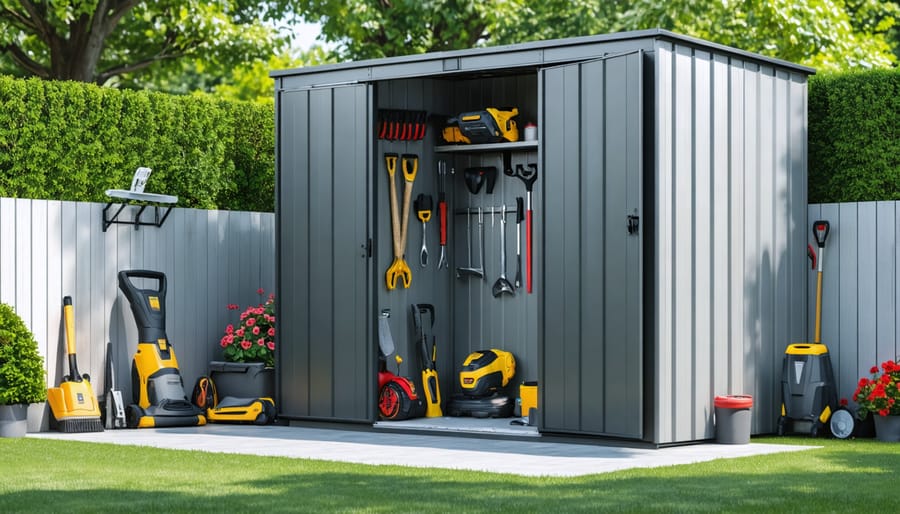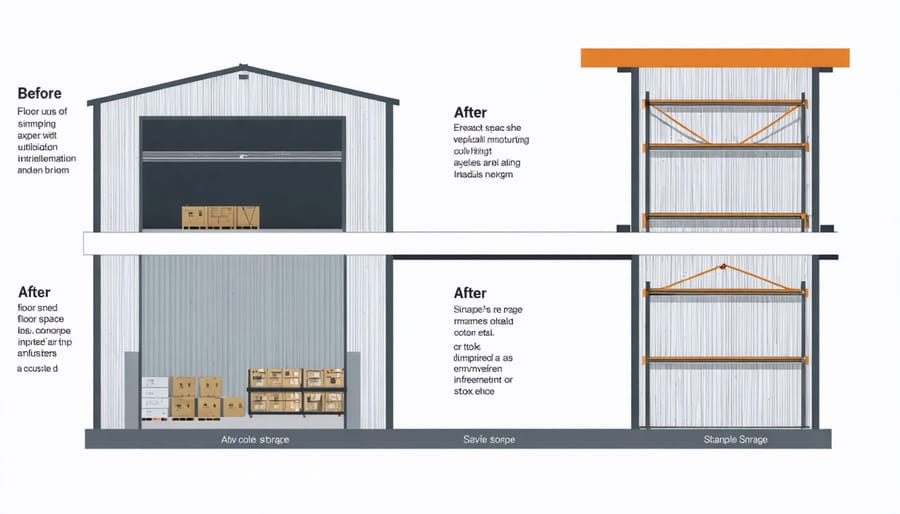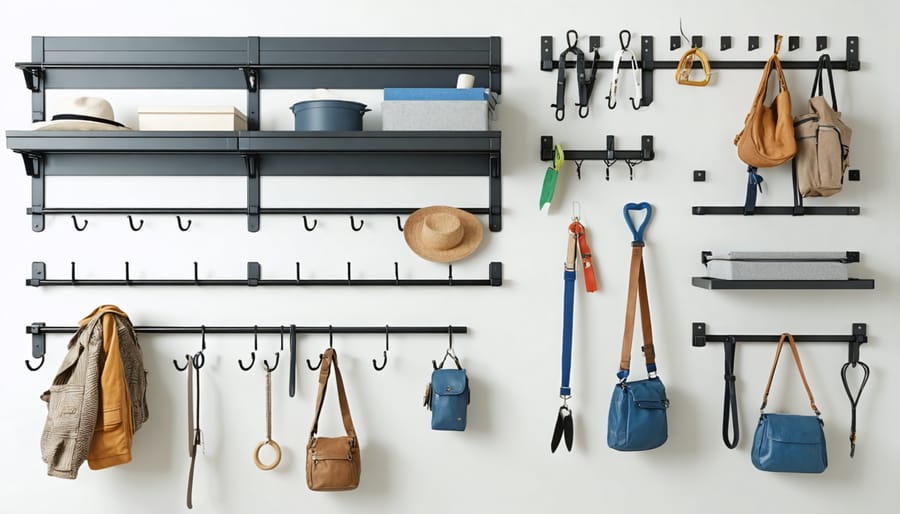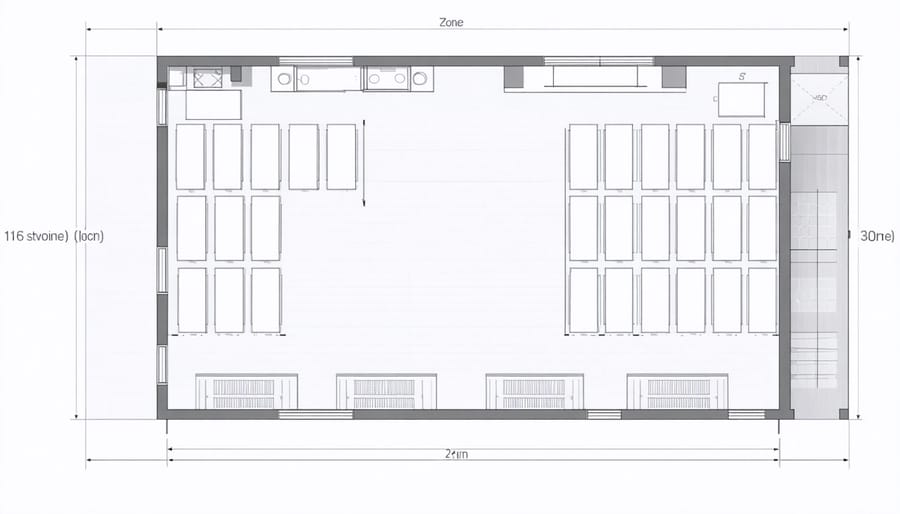Transform Your Cramped Shed into a Space-Maximizing Storage Powerhouse

Transform your backyard storage capabilities with a large vertical storage shed, the ultimate solution for maximizing limited outdoor space without sacrificing accessibility. These towering structures revolutionize how you organize your storage space, offering up to three times more usable area compared to traditional horizontal sheds. Perfect for storing long-handled garden tools, ladders, and seasonal equipment, vertical sheds make brilliant use of often-overlooked overhead space while maintaining a surprisingly modest footprint.
Modern vertical storage sheds combine clever engineering with practical design features like adjustable shelving, built-in tool organizers, and weather-resistant materials that ensure your belongings stay protected year-round. Whether you’re dealing with a compact urban yard or simply want to maximize your property’s storage efficiency, these innovative structures offer the perfect blend of functionality and space-saving design. Their slim profile and contemporary aesthetics also make them an attractive addition to any outdoor space, proving that practical storage solutions don’t have to compromise on style.
Why Vertical Storage is Your Shed’s Best Friend

Space Efficiency Calculations
When comparing traditional horizontal storage to vertical solutions, the numbers speak volumes. A standard 8×10 foot shed utilizing vertical storage can effectively double or triple its usable space. By implementing wall-mounted shelving and overhead storage systems, you can transform your cluttered shed into an efficiently organized space.
Let’s break down the math: A typical floor-only storage approach uses approximately 80 square feet of space. By incorporating vertical storage up to 8 feet high, you gain an additional 160 square feet of usable wall space. Adding overhead storage can contribute another 40-60 square feet, bringing the total usable space to nearly 300 square feet – that’s a 275% increase in storage capacity!
Real-world applications show that implementing vertical storage solutions can free up to 75% of floor space, allowing for better organization and easier access to stored items. This means you can store the same amount of equipment and supplies in a shed that’s potentially half the size of what you’d normally need, saving both space and money.
Weight Distribution Fundamentals
When maximizing vertical storage space, proper weight distribution is crucial for both safety and longevity of your storage system. Start by placing heavier items at ground level or on the lowest shelves to create a stable foundation. This includes tools like lawn mowers, heavy power equipment, and large containers of materials.
As you move upward, gradually transition to lighter items. The middle section is perfect for medium-weight items such as garden supplies, boxed holiday decorations, and smaller power tools. Reserve the uppermost shelves for your lightest items – empty plastic containers, seasonal decorations, and lightweight sporting equipment.
Always consider your shed’s weight capacity limits and ensure even distribution across shelving units. A good rule of thumb is to keep 60% of your total storage weight in the bottom third of your shed. Install proper wall anchoring for shelving units and regularly check that mounting hardware remains secure.
Remember to maintain clear access paths and keep frequently used items within comfortable reach. This strategic approach not only prevents structural stress but also makes your vertical storage space more practical and safer to use.
Essential Vertical Storage Components
Wall-Mounted Systems
Wall-mounted storage systems offer an incredibly efficient way to maximize your vertical storage space while keeping items easily accessible. These systems typically consist of tracks, brackets, and various attachments that can be customized to your specific needs.
Start by installing horizontal mounting tracks directly into your wall studs – this provides the foundation for your entire storage system. Most tracks can support between 75 to 200 pounds per linear foot when properly installed. Choose heavy-duty steel tracks for durability and reliable weight support.
Popular wall-mounted accessories include:
– Hook sets for hanging garden tools and sports equipment
– Adjustable shelving brackets
– Tool holders and utility hooks
– Bike racks and specialized equipment mounts
– Storage baskets and bins
When installing your wall system, always use a stud finder and level to ensure proper alignment. Mark your mounting points carefully and pre-drill holes to prevent wood splitting. Consider leaving about 24 inches of space between tracks for optimal versatility.
For maximum organization, group similar items together and adjust your configuration seasonally. Keep frequently used items at eye level, while storing seasonal equipment higher up. Many homeowners find success by creating designated zones – one for gardening tools, another for sports equipment, and so on.
Remember to periodically check all mounting hardware and tighten any loose components to maintain system safety and stability.

Ceiling Storage Solutions
Maximizing vertical space doesn’t stop at the walls – your shed’s ceiling offers valuable storage potential that often goes unused. Installing overhead storage racks can effectively double your storage capacity while keeping the floor clear for larger items and easy movement.
When implementing ceiling storage, safety should be your top priority. Choose heavy-duty mounting brackets and ensure they’re properly secured to the shed’s structural supports, not just the ceiling panels. Most ceiling storage systems can handle between 250-600 pounds when properly installed, but always check manufacturer specifications for weight limits.
Consider installing adjustable ceiling storage racks that can be lowered when needed, making it easier to access stored items. These systems work particularly well for seasonal items like holiday decorations or camping gear that you don’t need frequent access to.
For lighter items, cargo nets or hanging baskets provide flexible storage options without requiring heavy-duty installation. Installing hooks or pegboard systems on the ceiling’s underside creates perfect spots for hanging tools, extension cords, or garden hoses.
Remember to keep heavier items closer to the walls where the structure is typically strongest, and lighter items toward the center. Always maintain proper clearance around doors and ensure stored items won’t interfere with the shed’s ventilation system or lighting fixtures.
Pro tip: Label your ceiling storage containers clearly and create a simple inventory system to track what’s stored overhead, saving you time when searching for specific items.
Corner Maximization Techniques
Corner spaces in vertical storage sheds often become dead zones where valuable storage potential goes unused. To maximize corner storage space, consider installing corner shelving units that fit snugly into these awkward angles. Triangle-shaped shelves work particularly well, creating tiers of storage without wasting an inch of space.
Installing pegboard panels in corners allows you to hang tools and equipment at various heights, making items easily accessible while utilizing vertical space efficiently. Corner tool towers are another smart solution, featuring rotating mechanisms that make it simple to access items stored in back corners.
For bulkier items, consider installing diagonal braces that create triangular platforms in upper corners. These spaces are perfect for storing seasonal decorations, camping gear, or lightweight boxes. Corner-specific organizing systems, such as modular cube storage turned diagonally, can transform these traditionally challenging spaces into highly functional storage areas.
Don’t forget about door corners – installing over-the-door organizers or corner-mounted tool racks can add significant storage capacity without impeding movement. For frequently used items, adding corner-mounted magnetic strips keeps metal tools within easy reach while maintaining an organized appearance.
Remember to keep heavier items at lower levels for safety and stability, gradually transitioning to lighter items as you work your way up the corners.
Implementation Strategy
Planning Your Layout
Before installing your vertical storage shed, taking time to plan your layout carefully will save you countless headaches down the road. Start by measuring your available space, including height, width, and depth. Remember to account for door swing space and any overhead obstacles like tree branches or power lines.
Create a detailed sketch of your intended layout, marking zones for different categories of items. Consider frequency of use – place everyday items at eye level, seasonal items up high, and heavy items at the bottom for stability. Leave clear pathways of at least 36 inches for easy access and safe movement.
Think vertically by planning your storage in layers. The floor level can accommodate large equipment and wheeled items, while middle sections work well for frequently accessed tools and supplies. Upper areas are perfect for lightweight, seasonal items stored in clearly labeled bins.
Factor in your storage needs by making a comprehensive inventory of items to be stored. Group similar items together and estimate the space each group will require. This helps determine the type and number of shelving units, hooks, and organizers you’ll need.
Don’t forget to plan for future expansion. Leave some flexible space that can adapt to changing storage needs. Consider incorporating adjustable shelving systems that can be reconfigured as needed.
Remember to include adequate lighting in your plan, especially if your shed will be used frequently. Natural light from windows or skylights can be supplemented with battery-operated LED lights for darker corners and evening access.

Installation Best Practices
Proper installation of your large vertical storage shed is crucial for its longevity and safety. Start by selecting a level ground surface, preferably on a concrete pad or well-compacted gravel base. If you’re working with uneven terrain, take time to level the area using a laser level and ensure proper drainage away from the shed’s foundation.
Before assembly, organize all components and read through the instruction manual completely. This preliminary step saves time and prevents costly mistakes. Gather necessary tools, including a power drill, level, measuring tape, and safety equipment like work gloves and safety glasses.
Always work with a partner when installing large panels and roof sections. This not only makes the job easier but also ensures safer handling of heavy materials. Pay special attention to anchoring your shed properly – use appropriate anchor bolts or tie-down kits suitable for your region’s weather conditions.
When assembling wall panels, start from the corners and work your way around. Ensure each panel is perfectly plumb before securing it. For the roof installation, begin from the edge and work toward the center, overlapping panels correctly to prevent water infiltration.
Double-check all seals and weatherstripping around doors and windows. Apply quality silicone caulk where needed to ensure weatherproofing. Once assembled, test the door alignment and adjust hinges if necessary for smooth operation.
Finally, consider adding interior bracing for extra stability, especially in areas prone to high winds. Installing proper ventilation systems helps prevent moisture buildup and protects your stored items. Remember to periodically check and tighten all fasteners during the first few months after installation.
Maintenance and Safety
Regular maintenance and safety checks are essential to ensure your large vertical storage shed remains a reliable and secure storage solution for years to come. Start by inspecting the foundation and anchoring system quarterly, ensuring all bolts and fasteners remain tight and secure. This simple check can prevent structural issues that might arise from seasonal changes or ground settling.
To maintain proper storage conditions, check ventilation systems monthly and clear any debris from vents. During wet seasons, pay special attention to moisture levels inside the shed, using dehumidifiers if necessary to protect your stored items from rust and mold.
Keep the tracking system for sliding doors clean and lubricated, ensuring smooth operation and preventing wear. Inspect door hinges, handles, and locks regularly, applying appropriate lubricant when needed. This maintenance not only extends the life of your shed but also enhances security.
Safety considerations should include proper weight distribution on shelving units. Never exceed recommended weight limits, and always place heavier items on lower shelves. Install adequate lighting for visibility and consider motion-sensor lights for added security and convenience.
Clean gutters and drainage systems seasonally to prevent water damage, and inspect the roof for any signs of wear or damage after severe weather events. Address any issues promptly to prevent more significant problems from developing.
For optimal organization and safety, maintain clear pathways within the shed and avoid storing items that could create hazards. Keep a fire extinguisher easily accessible and consider installing a basic security system for valuable items.
A large vertical storage shed can truly transform your outdoor storage capabilities while preserving valuable yard space. Throughout this guide, we’ve explored how these practical structures offer impressive storage capacity, maximize vertical space utilization, and provide versatile organization options for all your outdoor equipment and belongings. From choosing the right size and material to implementing smart organization systems, you now have the knowledge to make an informed decision about your storage solution.
Remember that proper planning, including site preparation and local permit requirements, is crucial for a successful installation. By focusing on vertical storage solutions, you’re not just buying a shed – you’re investing in a long-term solution that keeps your belongings protected while maintaining your property’s aesthetic appeal.
Whether you’re storing garden tools, seasonal decorations, or outdoor furniture, a large vertical storage shed offers the perfect balance of functionality and space efficiency. Take action today to reclaim your yard space and organize your outdoor items effectively. With proper maintenance and organization, your vertical storage shed will serve as a valuable addition to your property for years to come.

